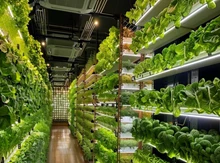
Odisha is looking to diversify its food economy and mitigate the risks of natural calamities through the cultivation and consumption of millets. Rice is the state's primary cereal crop, making up 91% of its total cereal production and 83% of its foodgrain output.
However, rice is vulnerable to floods, droughts, and cyclones, which Odisha has faced in 41 of the past 50 years. In response, the state has launched the Odisha Millet Mission, which aims to push the cultivation of millets in vulnerable rainfed and upland areas while reviving the millet-eating habit among traditionally millet-consuming groups, such as tribals.
The millet mission began in 2017 and has since expanded to cover 177 of 314 blocks in all 30 districts, with a five-year extension granted in 2022 At least 1,000 hectares in each block are to be brought under millets over five years, with farmers receiving seeds of promising varieties and a minimum of half an acre and a maximum of five acres to cultivate.
Those adopting a package of practices, including the system of millet intensification, transplanting and sowing in lines with adequate space between plants and rows, and intercropping with cotton or pulses, are paid Rs 26,500 a hectare over five years. There is also assured procurement at minimum support prices (MSP), with the MSP of rice last year at Rs 2,040 per quintal and of ragi at Rs 3,578.
In the first five years of the millet mission, about one lakh hectares shifted to millets, and coordinator Dinesh Ballam is confident of adding that number every year over the next five years. However, changing people's eating habits will not be easy, as it took decades for millet-eating communities to switch over to rice. Ballam prefers to take a decadal approach to the mission, rather than relying on short-lived fads.
To create demand for millets, Odisha has engaged celebrities and associated them with the World Men's Hockey event that took place in Bhubaneshwar and Rourkela in January 2023 Millets are being pushed at the village level at meetings of expectant and lactating mothers and at fortnightly health and nutrition days. They are being supplied through ration shops and are part of meals at anganwadis and schools, with about a hundred millet kitchens set up, 70 recipes devised to encourage consumption of millets beyond traditional gruel, and street vendors involved. There are also schemes for the installation of processing machinery at the village or panchayat levels.
In the coastal areas, Odisha intends to take up the cultivation of sorghum and pearl millet more as fodder crops, while ethanol can be produced from sweet sorghum, which blends into the government's motor-fuel blending program.
Although progress has been slow but steady, the area under ragi cultivation has increased from 47,000 hectares in 2016-17 to 1.24 lakh hectares in 2020-21. As the state continues to focus on millet cultivation, it hopes to ensure affordable nutrition for poor people and mitigate the risks of natural calamities.











